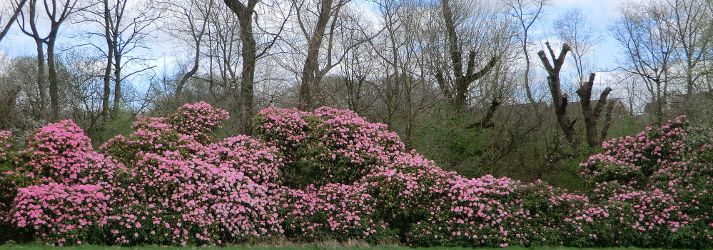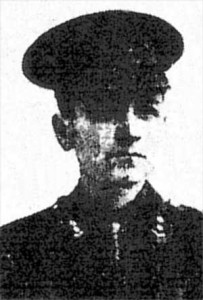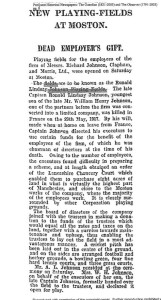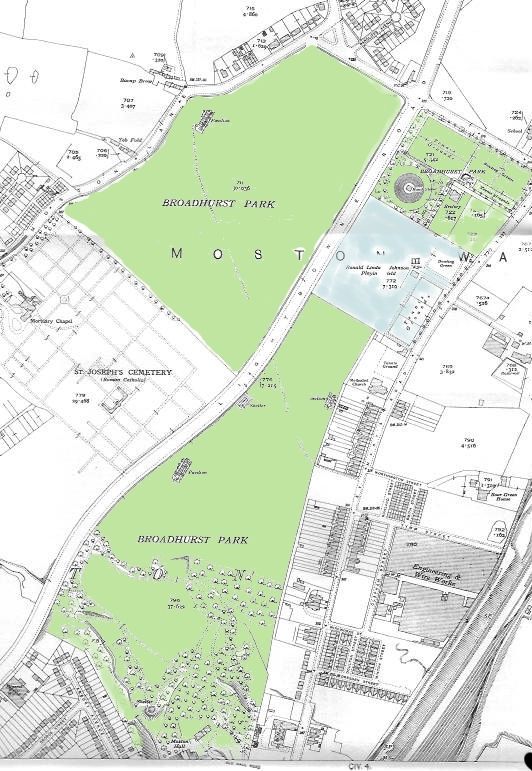Ronald Johnson Playing Field
The Ronald Johnson Playing Field was an 8 acre area between the primary school, No 335 St Marys Road and the SureStart Centre, now the site of the FC United Stadium. The field was given as a recreation ground following the death in action in WW1 of Captain Ronald Lindsay Johnson
who was killed on the Western Front in 1917. He was the youngest son of one of the partners in a nearby engineering firm, Johnson, Clapham & Morris. He left shares which were eventually used to fund a sports ground for the firm’s employees. The sports ground was opened on 17th June 1922.
The land was sold to the Council when the factory moved to Trafford Park in the 1930’s and continued to be used as playing fields. For many years it was used for cricket matches, football, and sports days for local schools. Fun fairs were also held twice a year. A cycle speedway track was built during the 1980s.
In 2007 a fence with gates was erected at the perimeter of the field. This was to allow a local football team, Moston Juniors, who had been given a lease by the Council, to secure funding for the development of the site. Thus began a series of events which would lead to the eventual loss of around 15 acres of playing fields, with the covenants on the fields being overridden.
In April 2011 Manchester Council announced that it had decided to offer the the 8 acre Ronald Johnson site to a football club, to build a new 5,000 seater stadium. Plans also included taking 4.5 acres of the adjoining Broadhurst playing fields to provide practice pitches and an all weather pitch for the club.
The subsequent planning application caused much controversy. Many local residents opposed the scheme on the grounds of loss of a public open space and that the scheme had inadequate parking provision and would cause noise and congestion. In October 2011, at the end of the consultation process, 5,635 letters of support and 2,226 letters of objection had been sent to the Council. Letters in support of the application had been sent from a wide geographical area, including many from outside Manchester. The letters opposing the the plans were mainly from local residents.
A local residents’ group, RURA (Residents United Residents Association) was formed to fight the plans. The planning application was approved but solicitors on behalf of RURA applied for a judicial review of the Council’s planning decision. The judicial review ruled that the planning decision had been lawfully made. The final legal action by RURA came to an end after an unsuccessful challenge was made to the Court of Appeal in March 2013 and RURA was denied leave to appeal against the decision.
Work finally began on the site in November 2013 and the stadium was completed in May 2015. back to top




